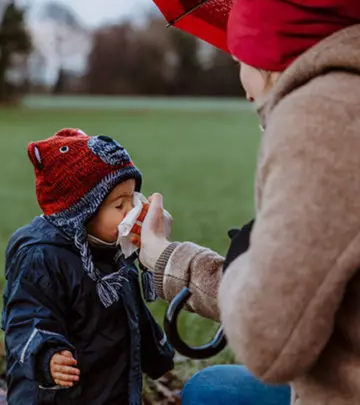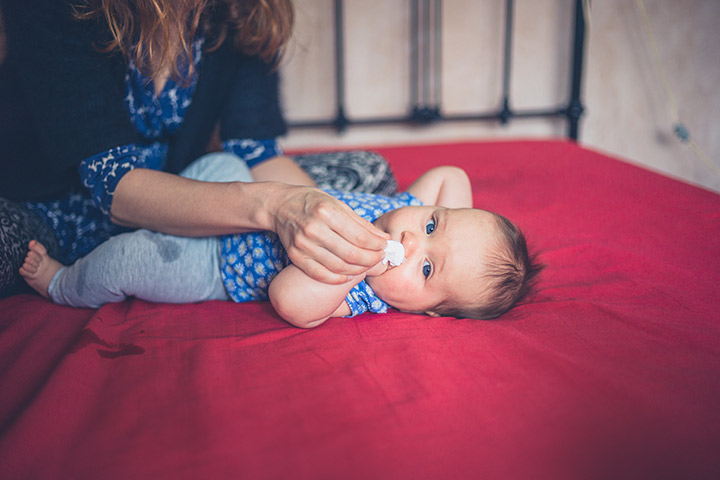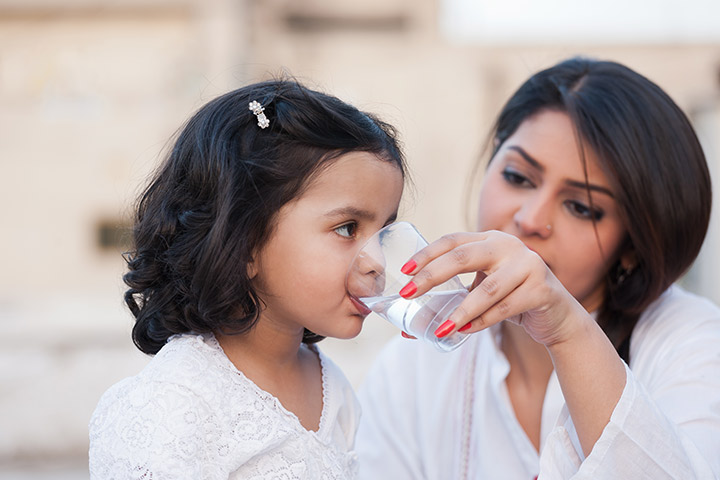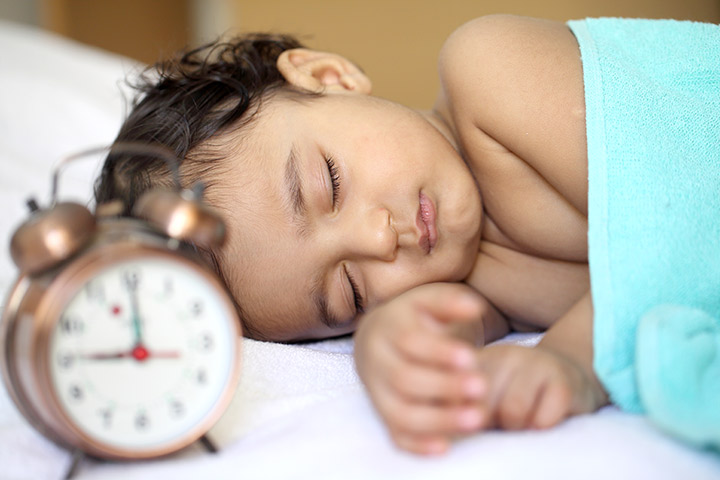
Image: Shutterstock
Babies are adorable little beings on whom we can’t stop showering our affection! But come cold weather, and these cute little fellas become intolerable. Their tiny blocked noses interfere with their sleep and feeding routines, making them irritable and cranky. This is largely due to a still-developing immune system which makes them prone to infections and illnesses. So, what does one do? First and foremost, visit your doctor. In the meantime, you can try alleviating your baby’s runny nose in a natural way. Here’s how:
Clear The Mess
When a baby’s or toddler’s nose is blocked, they are not in a position to blow and clear it the way adults do. It takes them quite a while to learn this skill. Until that happens, they need your help to keep their noses clean. Often, the sticky mucus hardens in and around the babies’ noses, making them irritable. To clear this mess, dip a clean piece of soft cloth or a cotton swab in warm water. Dab the area around the baby’s nose with it and swiftly wipe the mess. But mind you, it’s not as easy as it sounds! Getting a hold of an already irritated and cranky kid to pick his/her nose clear will be quite a struggle. So, try to do this when your baby is asleep or while giving your little one a nice, warm water bath.
Steaming/Vaporizing
It is a tried-and-tested formula which does not require any medications at all. Use a good steamer and make your kid inhale the steam for at least 10 minutes, 3 times a day, preferably before bedtime. If your baby is less than 2 years old, you can make him/her sit in your lap. Position the steamer far enough so that it does burn your little one’s skin. Your baby’s nasal congestion should clear in a week or two with steaming. Placing a good humidifier in your baby’s room also helps.
Normal Saline Nose Drops
Saline drops are nothing but a gentle solution of salt and purified water. It is non-medicated and completely safe to be used on babies and children (1). Put two or three drops in your child’s nose or as directed by the physician. These drops have a thinning effect on the thick mucus. You can then either remove it using a bulb syringe or simply wipe it with a soft cloth when it comes out (2).
Increase Fluid Intake
Keeping your child well-hydrated during a bout of cold can help thin out the mucus. This helps the sinuses drain out the excess mucus easily (3). So, make sure your child drinks plenty of water during this time. For babies, you can increase the quantity of breast milk or formula. For older kids, try giving some warm soups or warm milk with a teaspoon of honey (4).
Raise The Pillow
Kids generally find it difficult to sleep when they have a cold. The blocked nose makes it difficult for them to breathe and mouth-breathing disturbs their throat. In order to help them, just raise the height of the pillow a bit. You can do this either by placing a flat bed sheet underneath the pillow or rolling up the mattress underneath. But make sure that the height is not too much so that it does not cause neck pain in your child.
Give It Time
You need to understand that the cold and runny nose symptoms are usually short-lived and generally don’t require treatment every time. If your child remains active, sleeps and eats normally, and does not show any signs of weakness, then it is okay to let it pass naturally.
So, the next time your baby/child has a runny nose, you know what to do, right? However, no matter what you do, make sure you do not self-medicate. Do not give any cough and cold medication that you might have used previously on your child or on his/her sibling. For such things, always visit the doctor.



















